What is a 4-axis CNC machining and how does it work?
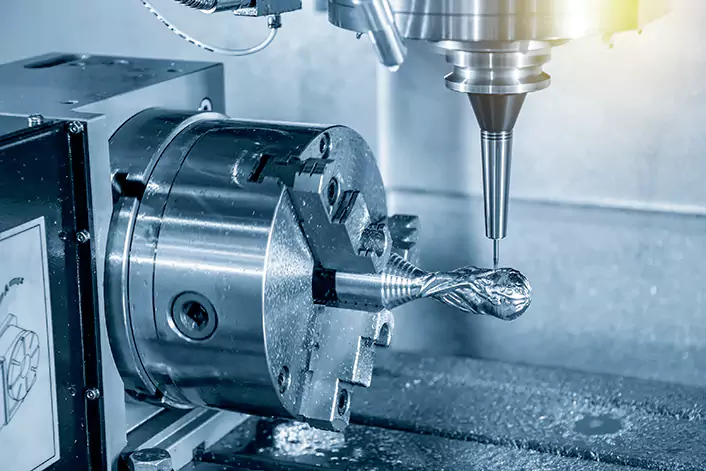
CNC machining, or computer numerical control machining, is a modern manufacturing process that uses automated machinery and computer programming to create precise and complex parts and components. One type of CNC machining is 4-axis machining, which adds an additional rotary axis to the more commonly used 3-axis machines.
4-axis CNC machining allows for greater precision and versatility in the production of complex parts. The fourth axis, also known as the A-axis, enables the machine to rotate the part being worked on, allowing for more intricate cuts and contours.
With 4-axis CNC machining, manufacturers can produce highly detailed and accurate parts with greater efficiency and precision than with traditional machining methods. In this article, we will explore the basics of 4-axis CNC machining, including its operation, benefits, and applications in various industries, as well as its comparison to other machining methods and tips for choosing 4-axis milling.
Types of CNC Machines
There are several types of CNC machines, each with varying levels of complexity and capabilities. The most common types include 3-axis, 4-axis, and 5-axis machines.
3-axis CNC machines are the simplest type and operate on the X, Y, and Z axes. They are commonly used for producing flat or simple curved parts, such as those found in furniture, signage, and electronics.
4-axis CNC machines add the A-axis, or rotational axes, to the three axes of the 3-axis machine. This enables the machine to rotate the part being worked on, allowing for more intricate cuts and contours. This type of machine is commonly used in the aerospace, automotive, and medical industries.
5-axis CNC machines are the most advanced type of CNC machine, adding two rotational axes, typically referred to as the B axis and C axis, to the three axes of the 3-axis machine. This allows for even greater precision and complexity in the production of parts and components. 5-axis machines are commonly used in the aerospace and defense industries, as well as for producing complex medical devices and surgical instruments.
Of these types, the 4-axis CNC machine is a popular choice for manufacturers seeking greater precision and efficiency in their production processes.
How 4-axis CNC Machining Works
4-axis CNC machining works by adding a rotary axis, known as the A-axis, to the traditional X, Y, and Z axis. The A-axis allows the machine to rotate the part being worked on, which adds greater precision and flexibility to the manufacturing process.
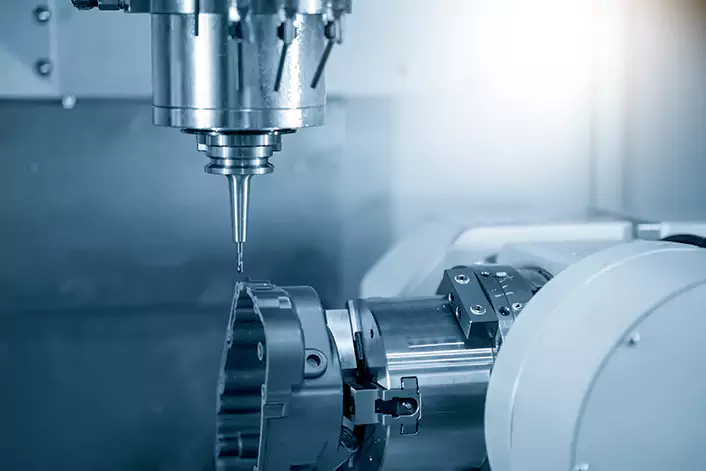
Axis movement
The X, Y, and Z axis control the movement of the cutting tool, while the A axis controls the rotation of the part being worked on. This allows for more intricate cuts and contours to be made with greater precision.
Tools used in 4-axis CNC machining
4-axis CNC machines use a range of cutting tools, including drills, end mills, and reamers. These tools are used to remove material from the workpiece and create the desired shape and design.
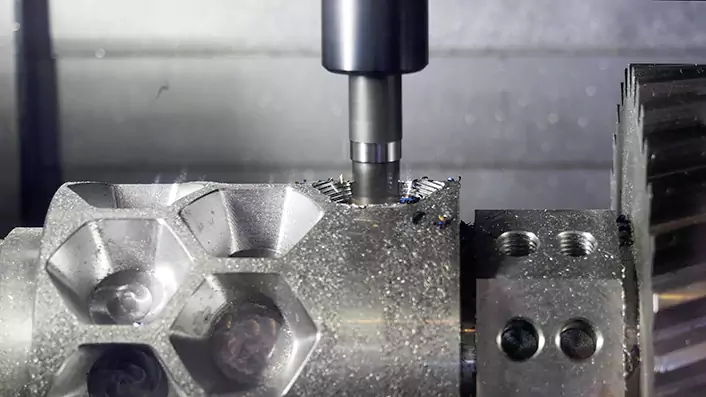
4-axis CNC machining process
An example of a 4-axis CNC machining process would be the production of a complex metal part, such as a turbine blade. The part would be mounted on the machine’s rotary table, which is controlled by the A-axis. The cutting tool would then move along the X, Y, and Z axis to remove material from the workpiece, while the rotary table rotates the part to create the desired shape and contour.
In a word, 4-axis CNC machines are capable of producing highly accurate and detailed parts with greater efficiency and precision than traditional machining methods.
Materials machined with a 4-axis CNC machine
A 4-axis CNC machine can machine all the materials that a 3-axis machine can handle, plus it adds the ability to machine more complex parts that require rotation around a 4th axis. This additional axis provides more flexibility and control to the machining process. Some examples of materials that can be machined with a 4-axis CNC machine are:
Wood: Such as hardwoods, softwoods, MDF, and plywood.
Plastics: Such as nylon, polystyrene, and polypropylene.
Metals: Such as aluminum, brass, copper, stainless steel, and titanium.
Composites: Such as carbon fiber, fiberglass, and Kevlar.
Foam: Such as polystyrene foam and polyurethane foam.
Ceramics: Such as porcelain, alumina, and zirconia.
Benefits of 4-axis CNC Machining
There are several benefits to using 4-axis CNC machining for manufacturing parts and components, including:
Increased precision
4-axis CNC machines offer greater precision than traditional machining methods, as they are able to produce more intricate cuts and contours with greater accuracy. This results in higher-quality parts that meet tighter tolerances.
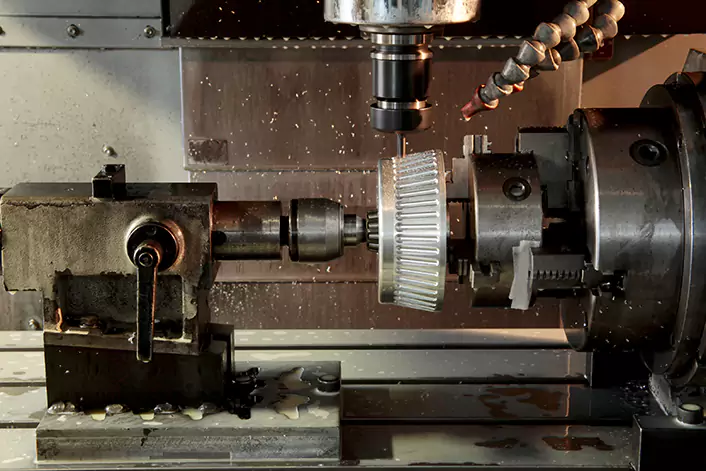
Faster production times
4-axis CNC machines are able to produce parts faster than traditional machining methods, as they are able to make multiple cuts at once and can work on multiple sides of a part without the need for manual intervention. This results in faster turnaround times and increased productivity.
More complex designs possible
4-axis CNC machines enable manufacturers to produce more complex parts and components that would be difficult or impossible to create with traditional machining methods. This opens up new possibilities for product design and innovation, particularly in industries such as aerospace and medical device manufacturing.
Overall, 4-axis CNC machining offers a range of benefits for manufacturers seeking greater precision, efficiency, and design flexibility in their production processes. As technology continues to advance, it is likely that the use of the 4-axis and other types of CNC machines will become even more widespread in the manufacturing industry.
Applications of 4-axis CNC Machining
4-axis CNC machining has a wide range of applications in various industries, including:
Aerospace industry
The aerospace industry relies heavily on 4-axis CNC machining for the production of complex parts and components for aircraft, such as turbine blades, engine components, and structural parts. The high precision and accuracy of 4-axis CNC machines make them an ideal choice for the demanding requirements of aerospace manufacturing.
Automotive industry
The automotive industry also uses 4-axis CNC machines for the production of complex parts and components, such as engine blocks, transmission components, and suspension parts. The high efficiency and precision of 4-axis CNC machines allow for faster production times and improved part quality.
Medical industry
In the medical industry, 4-axis CNC machines are used to produce complex surgical instruments and medical devices, such as implants and prosthetics. The precision and accuracy of 4-axis CNC machines are critical in the manufacturing of these types of products, as they must meet strict safety and quality standards.
Jewelry industry
The jewelry industry also utilizes 4-axis CNC machines for the production of intricate and detailed designs in metals and other materials. The precision and flexibility of 4-axis CNC machines allow for the creation of unique and complex designs that would be difficult or impossible to achieve with traditional jewelry-making techniques.
Generally speaking, 4-axis CNC machining has a wide range of applications in various industries, from aerospace and automotive manufacturing to medical device and jewelry production. The versatility and precision of 4-axis CNC machines make them an essential tool for modern manufacturing processes.
Comparison of 4-Axis Milling to Other Milling Methods
4-Axis milling is an advanced machining method that offers several advantages over other milling methods, such as 3-axis and 5-axis milling. In this section, we will compare 4-axis milling to these other methods.
3-Axis Milling vs 4-axis milling:
3-axis milling is a simpler form of CNC milling that involves the cutting tool moving along three axes – X Y Z. While 3-axis milling can produce basic shapes and designs, it has limited capabilities when it comes to producing complex parts with curved surfaces or undercuts. It also requires more setups, which can increase production time and costs. On the other hand, 4-axis milling adds a fourth axis of rotation to the cutting tool, allowing it to machine parts with more complex geometries and features. With the fourth axis, the tool can move around the part, allowing for better access to all sides of the part and reducing the need for multiple setups. This leads to faster production times and increased accuracy and precision.
5-Axis Milling vs 4-axis milling:
5-axis milling is the most advanced type of milling, adding two additional axes of rotation to the cutting tool. This allows for even more complex geometries and the ability to produce parts with undercuts and deep pockets. However, 5-axis milling is more expensive and requires more advanced programming and machining skills, making it less accessible to some manufacturers. 4-axis milling offers a good compromise between simplicity and complexity, with the ability to produce more complex parts faster and with greater accuracy than 3-axis milling.
While 3-axis milling is a simpler and less expensive method, it has limited capabilities when it comes to producing complex parts. 4-axis milling offers a good compromise between simplicity and complexity, with the ability to produce more complex parts faster and with greater accuracy than 3-axis milling. 5-axis milling is the most advanced option but comes with higher costs and more specialized requirements. Ultimately, the choice between these methods will depend on the specific needs of the project and the capabilities of the manufacturer.
Factors to Consider When Choosing 4-Axis Milling
When considering 4-axis milling as a machining method, there are several factors that must be taken into account to ensure that it is the best option for the specific project. Here are some of the most important factors to consider when choosing 4-axis milling:
Cost
Cost is always an important factor when choosing a machining method. 4-axis milling is generally more expensive than 3-axis milling, but less expensive than 5-axis milling. The cost of the machine and the labor required to operate it are both factors to consider when deciding whether 4-axis milling is feasible.
Material Properties
Different materials have different properties that can affect the machining process. For example, some materials may be more difficult to machine than others or may require different cutting tools or machining parameters. The material properties must be considered when selecting the appropriate machining method, as well as the tooling and cutting parameters.
Complexity of Part Design
4-axis milling is a good choice for parts with complex geometries, but it is important to consider the specific requirements of the part when selecting a machining method. If the part requires multiple setups or special fixturing, 4-axis milling may not be the best option. On the other hand, if the part has features that can be accessed more easily with a fourth axis, such as holes or pockets on the side of a part, 4-axis milling can be a very efficient option.
Required Tolerances
Tolerances are the allowable variation in a dimension or feature on a part. Depending on the required tolerances, 4-axis milling may or may not be the best option. 4-axis milling can achieve high levels of accuracy and precision, but may not be as precise as 5-axis milling in certain situations.
When choosing 4-axis milling, it is important to consider the cost, material properties, complexity of part design, and required tolerances. By taking these factors into account, manufacturers can make informed decisions about the best machining method for their specific project.
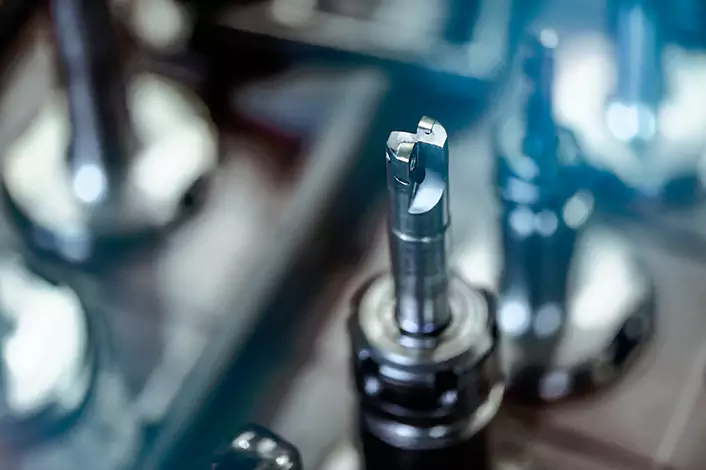
Final Thoughts
In conclusion, 4-axis CNC machining offers a range of benefits for manufacturers seeking greater precision, efficiency, and design flexibility in their production processes. By adding a rotating axis, the A-axis, to the traditional X, Y, and Z axes, 4-axis CNC machines can produce more intricate cuts and contours with greater accuracy, resulting in higher quality parts that meet tighter tolerances.
The benefits of 4-axis CNC machining include increased precision, faster production times, and the ability to produce more complex designs, making it an ideal choice for a wide range of industries. From aerospace and automotive manufacturing to medical device and jewelry production, 4-axis CNC machines are an essential tool for modern manufacturing processes.
Overall, 4-axis CNC machining offers manufacturers a highly efficient and precise method of production that allows for greater flexibility and innovation in product design. As technology continues to advance, it is likely that the use of the 4-axis and other types of CNC machines will become even more widespread in the manufacturing industry.